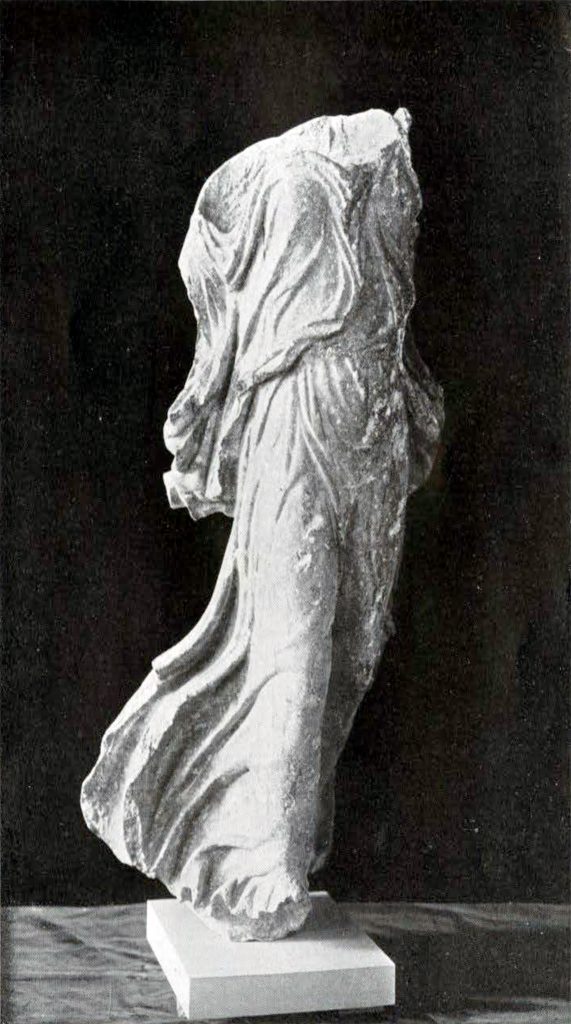In 1901 the Museum purchased in Rome a statuette of colored marble representing a woman in rapid motion, her drapery blown behind her in the wind. It is a type of statue not uncommon in Greek sculpture and more than one mythological personage is so depicted. Thus Nike, as she descends from heaven to earth to bring victory to mortals; thus the Nereids who impersonate the swift movement of floods; or the Maenads as they dance in the ecstatic transports of a Bacchic revel; or the Niobids as they flee the terror of Apollo’s shafts; or Diana herself when as moon-goddess she ranges over the country-side. Yet of all the swiftly moving forms which these deities assume in Greek sculpture, not one corresponds exactly to that of this statuette.

Museum Object Number: MS4029
Image Number: 15498
The figure is about a third of life-size, measuring twenty-four inches in height and is cut from a dark grayish-red marble conglomerate. That which first strikes the observer in looking at this statue is that its contours correspond exactly with the margins of the drapery and that the surfaces where the parts now missing were joined are not broken but are hollowed and dressed as for the reception of separate pieces of stone. It is accordingly clear that the undraped parts were worked in another stone, probably a white marble, and since parti-colored statues are unknown in Greek art, it is equally clear that the replica dates from the Roman period.
As regards style alone, the figure might have been assigned to an earlier epoch, for the modeling is altogether fresh and vigorous without a trace of dull copying. And yet there is something in the drapery which suggests that the sculptor was unfamiliar with the garments he was portraying. The triangular folds in the upper part of the chiton are naturally confined to the space between the breasts, whereas here a line of them goes trailing off in a series of folds which extends as far as the girdle.
Lovely as the figure is, it must be regarded as a Roman copy, but the prototype of the statue may well be assigned to the best period of Greek art, probably to the end of the fifth century just before the period of the Epidauros Nereids and Victories which are not unlike this statuette in style.
E. H. H.

